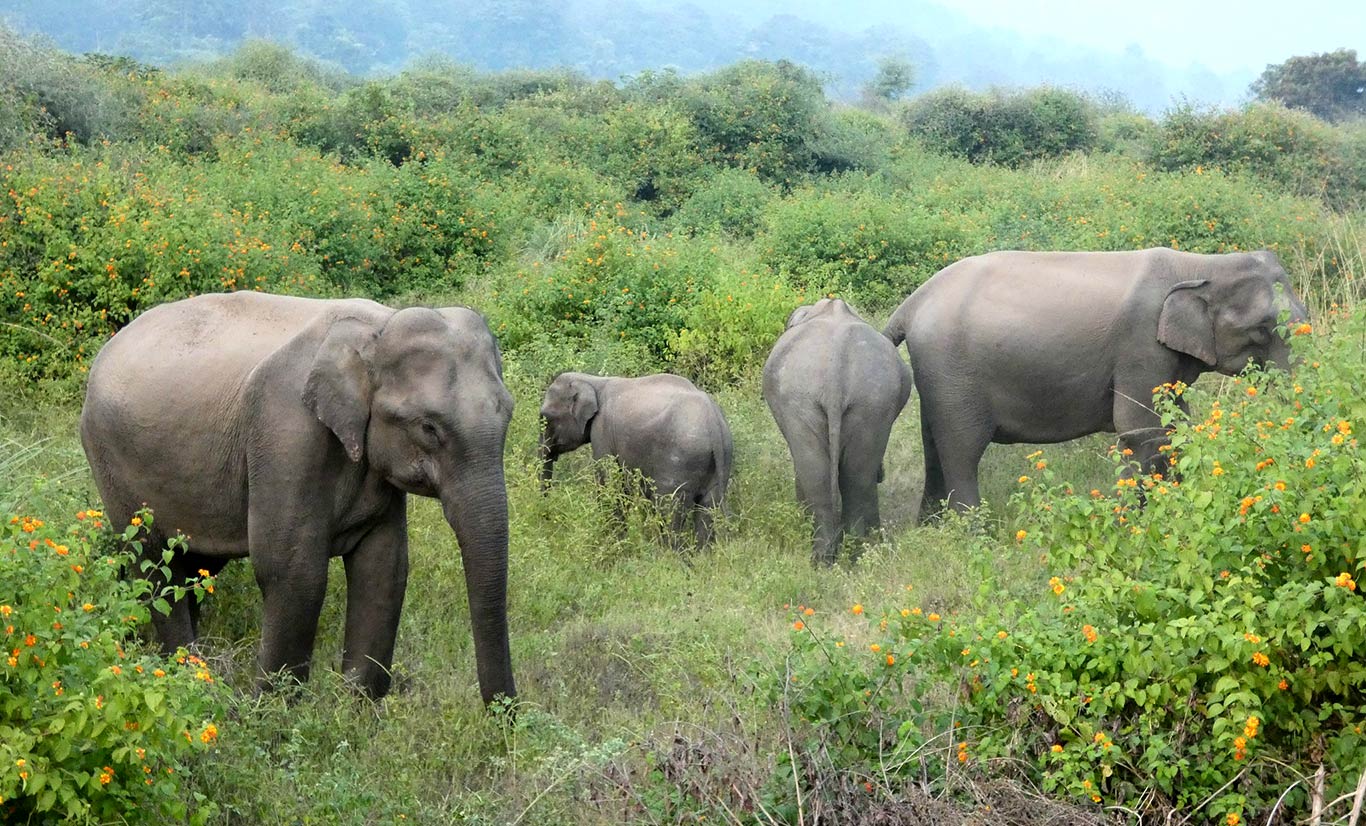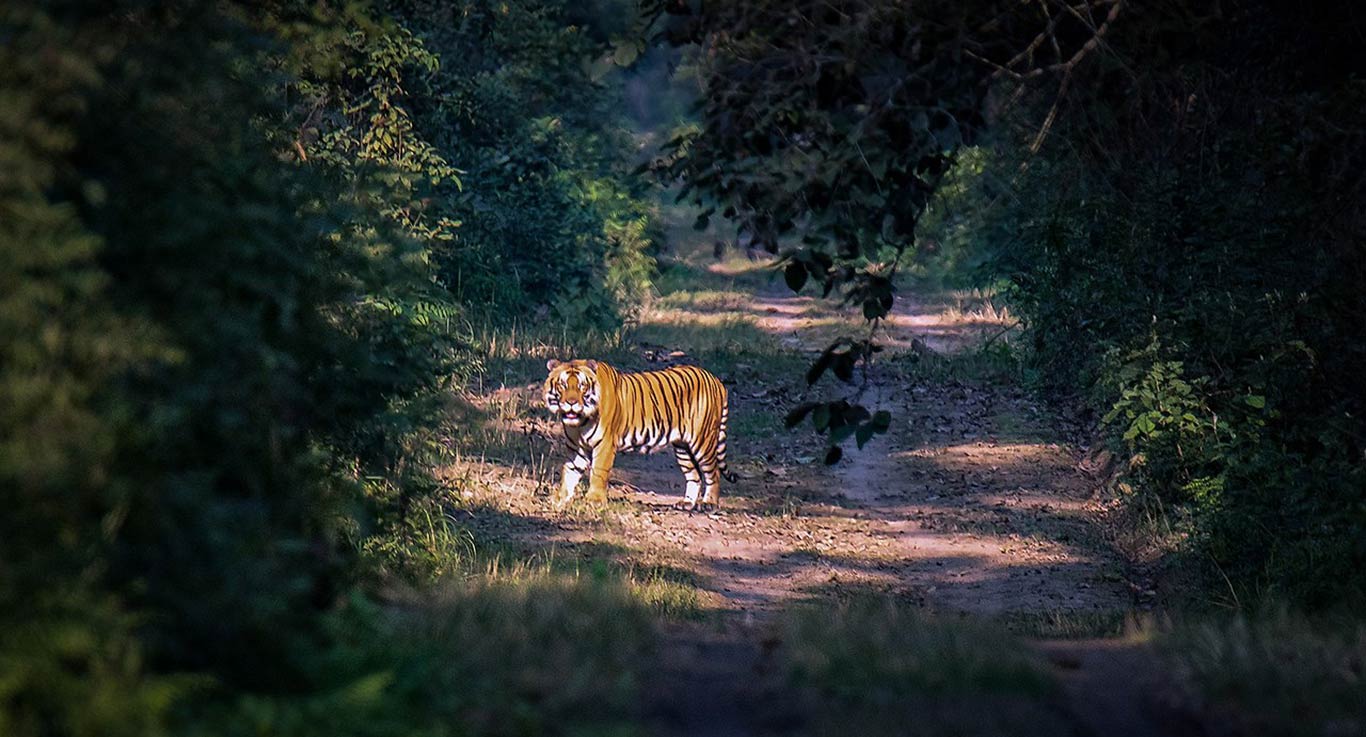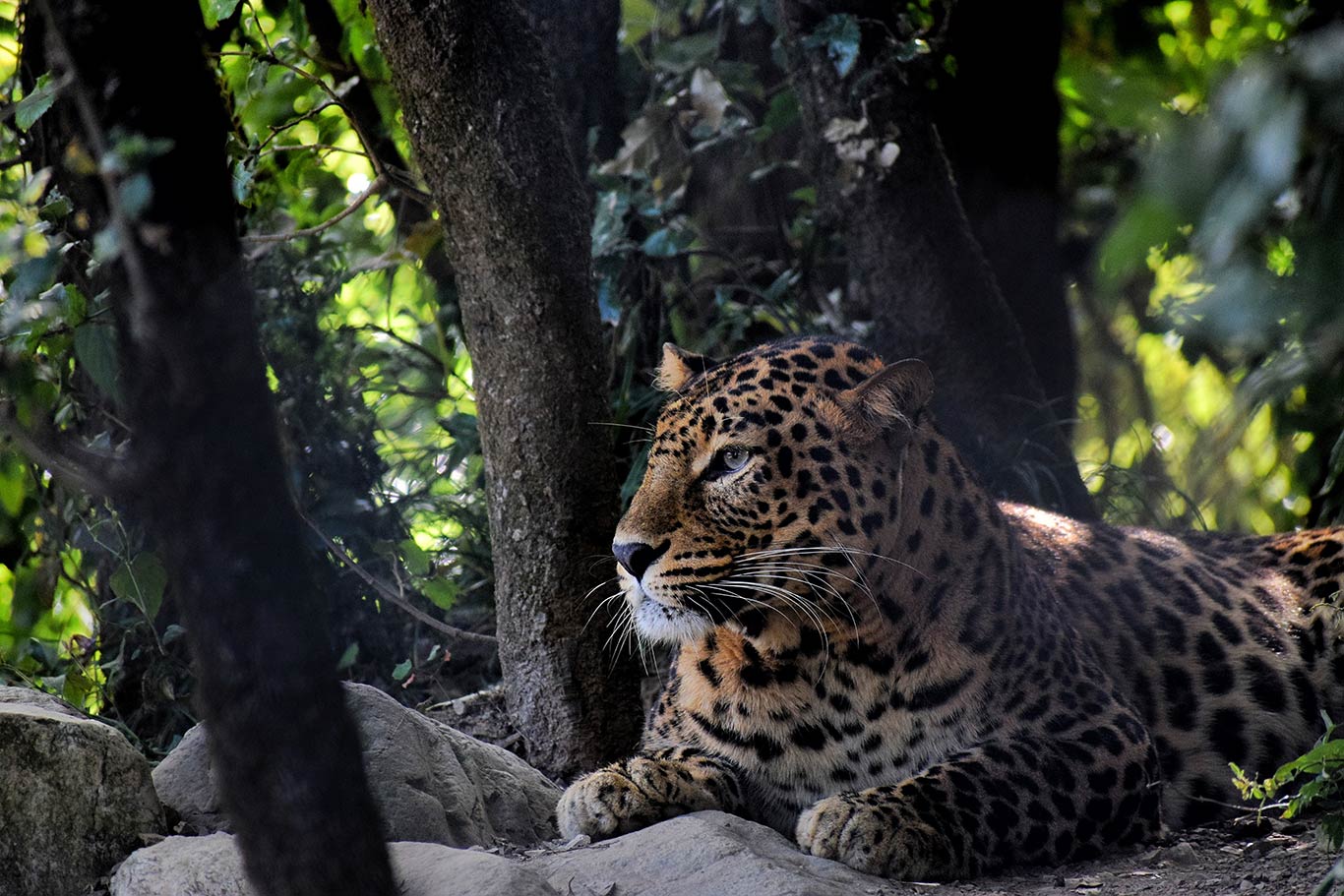Image by Prashant Saini via Unsplash
The Jim Corbett National Park is the oldest national park in India and was established in 1936 as Hailey National Park to protect the endangered Bengal tiger. It is located in Nainital district and Pauri Garhwal district of Uttarakhand and was named after Jim Corbett, a well known hunter and naturalist. The park was the first to come under the Project Tiger initiative.
For tourists who love nature – sprawling grasslands, dense forests and wildlife – a few days of tranquility and serenity in what could be called a Garden of Eden, India offers an array of National Parks and Sanctuaries where you can watch the magnificent tigers, the stately elephants, leopards, the one-horned rhinos, a myriad exotic birds and countless reptiles and insects. This is the land of Rudyard Kipling’s Baloo, Bagheera and Mowgli as well as Jim Corbett’s Land of the man-eaters.
Getting to the Jim Corbett National Park is a seven hours drive from Delhi, is in the forested foothills of the Himalayas in Uttarakhand. The 520 sq kms park is spread across flat valleys, hilly ridges and rolling grasslands. Though the sal is the dominant tree of the region, 110 varieties of trees and 30 species of bamboo can be found in Corbett. The magnificent Ramganga river teeming with fish, in particular the mahaseer, flows through the park. Corbett is famed for its tigers and large herds of wild elephants. You may get up in the morning and just a few hundred yards from the forest lodge you may see wild baby elephants chasing each other or making mock charges at their proud mamas.
One of the most exhilarating features of Corbett is the ride on elephant back at day break. It is cold and as you huddle in groups of four on the elephant’s back, the mahout steers through dense foliage and 3 m tall elephant grass where a tiger may be lurking. Even if you are not lucky enough to spot a tiger you cannot miss the cheetal, sambar, hog deer and barking deer. Corbett is the home of 50 species of mammals, 580 kinds of birds and 25 reptile species. The long-nosed gharial and crocodiles can be seen basking on the banks of the river.
For tourists who love nature – sprawling grasslands, dense forests and wildlife – a few days of tranquility and serenity in what could be called a Garden of Eden, India offers an array of National Parks and Sanctuaries where you can watch the magnificent tigers, the stately elephants, leopards, the one-horned rhinos, a myriad exotic birds and countless reptiles and insects. This is the land of Rudyard Kipling’s Baloo, Bagheera and Mowgli as well as Jim Corbett’s Land of the man-eaters.
Getting to the Jim Corbett National Park is a seven hours drive from Delhi, is in the forested foothills of the Himalayas in Uttarakhand. The 520 sq kms park is spread across flat valleys, hilly ridges and rolling grasslands. Though the sal is the dominant tree of the region, 110 varieties of trees and 30 species of bamboo can be found in Corbett. The magnificent Ramganga river teeming with fish, in particular the mahaseer, flows through the park. Corbett is famed for its tigers and large herds of wild elephants. You may get up in the morning and just a few hundred yards from the forest lodge you may see wild baby elephants chasing each other or making mock charges at their proud mamas.
One of the most exhilarating features of Corbett is the ride on elephant back at day break. It is cold and as you huddle in groups of four on the elephant’s back, the mahout steers through dense foliage and 3 m tall elephant grass where a tiger may be lurking. Even if you are not lucky enough to spot a tiger you cannot miss the cheetal, sambar, hog deer and barking deer. Corbett is the home of 50 species of mammals, 580 kinds of birds and 25 reptile species. The long-nosed gharial and crocodiles can be seen basking on the banks of the river.

Image by Linda de Volder via Flickr
The Dudhwa National Park is a national park in the Terai belt of marshy grasslands of northern Uttar Pradesh, India. It stretches over an area of 490.3 km2 (189.3 sq mi), with a buffer zone of 190 km2 (73 sq mi). It is part of the Dudhwa Tiger Reserve in the Kheri and Lakhimpur districts.
It is located on the Indo-Nepal border in the Lakhimpur Kheri District, and has buffers of reserved forest areas on the northern and southern sides. It represents one of the few remaining areas of the diverse and productive Terai ecosystem, supporting many endangered species, obligate species of tall wet grasslands and species of restricted distribution.
in Lakhimpur Kheri district of Uttarakhand, on the border of Nepal, has tall coarse grass sometimes forming impenetrable thickets, swampy depressions and lakes and excellent sal and bamboo forests. Dudhwa is home to the magnificent barasingha, the 12 horned swamp deer. In the rutting season the barasingha lock horns in battle for the female and if you are lucky to see the combat it is an unforgettable spectacle.
The big predators of the park are the tiger and the leopard. You can also find the sloth bear, jackals, civet cats, wild boar and, of course, a few rhinos in the grasslands. Colorful woodpeckers, barbets, kingfishers, minivets, bee-eaters and bulbuls flit through the forest canopy. At night the great Indian horned owl and jungle owlet set out on their predatory missions.
The best time to visit Corbett and Dudhwa is November to May. There is enough accommodation, private and government run, inside the parks and around them. But the expanding human population around both reserves is telling on these parks.
It is located on the Indo-Nepal border in the Lakhimpur Kheri District, and has buffers of reserved forest areas on the northern and southern sides. It represents one of the few remaining areas of the diverse and productive Terai ecosystem, supporting many endangered species, obligate species of tall wet grasslands and species of restricted distribution.
in Lakhimpur Kheri district of Uttarakhand, on the border of Nepal, has tall coarse grass sometimes forming impenetrable thickets, swampy depressions and lakes and excellent sal and bamboo forests. Dudhwa is home to the magnificent barasingha, the 12 horned swamp deer. In the rutting season the barasingha lock horns in battle for the female and if you are lucky to see the combat it is an unforgettable spectacle.
The big predators of the park are the tiger and the leopard. You can also find the sloth bear, jackals, civet cats, wild boar and, of course, a few rhinos in the grasslands. Colorful woodpeckers, barbets, kingfishers, minivets, bee-eaters and bulbuls flit through the forest canopy. At night the great Indian horned owl and jungle owlet set out on their predatory missions.
The best time to visit Corbett and Dudhwa is November to May. There is enough accommodation, private and government run, inside the parks and around them. But the expanding human population around both reserves is telling on these parks.

Image by Biswarup11 via Wikimedia Commons (CC BY-SA 4.0)

